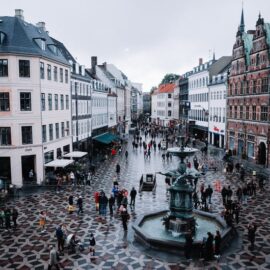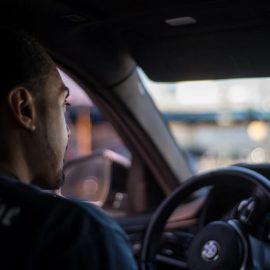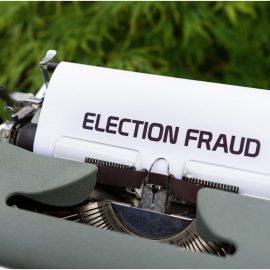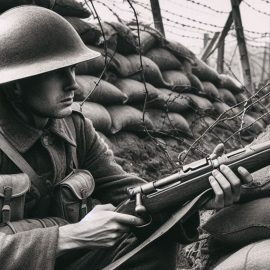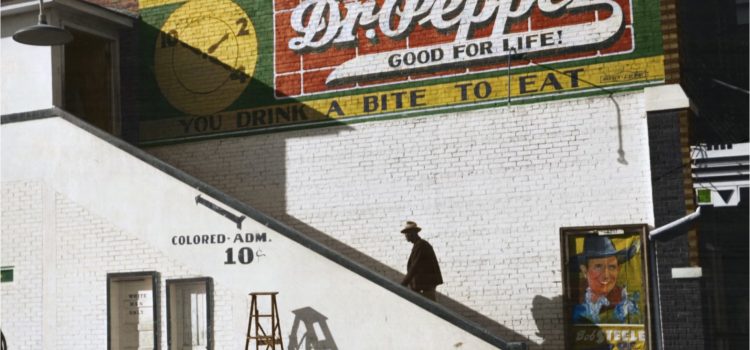
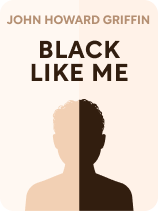
This article is an excerpt from the Shortform book guide to "Black Like Me" by John Howard Griffin. Shortform has the world's best summaries and analyses of books you should be reading.
Like this article? Sign up for a free trial here.
How did racism in the South during segregation affect the lives of Black Southerners? What discrimination did they face?
In the late 1950s, white journalist John Howard Griffin darkened his skin and spent six weeks traveling throughout the segregated Southern U.S. His aim was to convince white Americans that the U.S. was not the racism-free country they thought it was.
Read on for examples of racism in the South during segregation, based on Griffin’s findings.
Racism in the South: Griffin’s Account
In his book Black Like Me, John Howard Griffin discovered the extent to which Black Southerners faced racism in their daily lives by darkening his skin to appear like a Black man, then traveling for six weeks throughout the segregated Southern U.S. in the late 1950s. In this article, we’ll explain Griffin’s findings about how racism in the South limited Black Southerners’ access to public amenities and how this lack of access shaped their daily lives. Then, we’ll explore white Southerners’ racist treatment of Black Southerners.
Black Southerners Lacked Access to Public Amenities
First, Griffin contends that due to racism in the South, Black Southerners lacked access to public amenities such as parks, water fountains, bathrooms, and places to relax. This lack of access made it hard for Black Southerners to meet their basic needs. Griffin was struck by how much daily time he spent searching for Black-friendly bathrooms, resting spots, and places to eat and drink. Let’s explore two reasons behind Black Southerners’ lack of access to such amenities.
Legal Segregation
According to Griffin, Black Southerners lacked access to some public amenities due to racist laws in the South. The Deep South’s segregation laws required that Black people only use public facilities specifically designated for them. Furthermore, racism in the South meant that there were fewer public amenities for Black residents. For instance, Griffin often had to walk more than a mile to find a restroom.
| The History of Jim Crow Laws The laws Griffin describes that banned Black Southerners from public amenities are typically referred to as Jim Crow laws. These local and state laws made racial segregation legal in the Southern U.S. from the late 19th century until the mid-1960s. Let’s explore why these laws existed and how they affected daily life. In The New Jim Crow, Michelle Alexander argues that white leaders in Southern states enacted Jim Crow laws to maintain the social hierarchy that had existed under slavery. This hierarchy positioned white elites at the top, with Black people and poor white people beneath. Following the end of slavery, white leaders feared that Black and white workers—who together outnumbered the ruling class—would band together to drive the elites out of power. These white leaders crafted segregation laws with two aims in mind: – Aim 1: Separate Black and white workers. By keeping Black people and the white working class separate, white leaders hoped to prevent them from forming alliances. – Aim 2: Reinforce ideas of white racial superiority. These segregation laws ensured white people had access to better facilities than Black people, reinforcing the racist idea that white people were superior. White leaders hoped this, too, would prevent cross-racial alliances from forming. How comprehensive were these Jim Crow laws? The laws relegated Black people to second-class citizenship in nearly every area of life. In Black Like Me, Griffin encounters segregated bathrooms, water fountains, restaurants, and transportation—but these facilities were only a fraction of those segregated under Jim Crow laws. Schools, churches, hospitals, businesses, and libraries were also segregated. Jim Crow laws also went beyond restricting Black access to public facilities: For instance, they prevented Black people from buying property in white-dominated areas and forbade interracial cohabitation and marriage. |
Social Rules
Griffin claims that even in cases when Black Southerners could have legally used or enjoyed an amenity, they often couldn’t do so for social reasons. Black people had to follow unwritten, racist rules in the south about where they were welcome. These rules weren’t encoded in law; they were encoded in social norms. For instance, even though the streetcars and buses in New Orleans weren’t legally segregated, Black residents still sat at the back by default.
Furthermore, Griffin noticed that Black people had to defer to white Southerners’ racist preferences about Black behavior. White people sometimes expressed these preferences verbally. For instance, while resting on a public park bench, a white man told Griffin to leave—even though it was legal for Black people to be there. Other times, white people expressed these preferences nonverbally. Griffin noticed that throughout the Deep South, white people regarded him with a hostile glare that reflected their racism and hatred toward his Black-appearing body. Their glares made Griffin feel less than human, filling him with despair and grief.
| Jim Crow Laws Shaped Antiblack Social Norms In The Jim Crow Routine, historian Stephen Berrey corroborates Griffin’s claim that during this time, Black Southerners had to follow unwritten, social rules positioning them as inferior. Berrey adds that although these norms weren’t encoded in law, those who designed Jim Crow laws intended for these norms to arise. For instance, it was part of their plan for white Southerners to socially ostracize Black people. Griffin experienced this ostracism when the white man told him to leave the park, as well as any time white people glared at him. Berrey elaborates that, despite popular belief, Jim Crow laws weren’t designed to physically separate Black and white people: Instead, they were designed to keep Black and white people in close proximity so that Black people would face daily reminders that they were second-class citizens. Black and white people shopped, ate, and rode buses together, often separated by small barriers (such as ropes) that allowed these two groups to see, hear, and interact with each other. Jim Crow laws created a culture in which white people expected Black people to pay them deference in these shared spaces to reinforce the racialized social hierarchy. For instance, white bus riders expected Black riders to give up their seats for them. |
Black Southerners Faced White People’s Individual Racism
Second, Griffin reflects that while he was disguised as a Black man, some white people treated him and the Black people around him with kindness and politeness; however, most showed some degree of racism where he traveled in the South. Here, we’ll explore two types of racist treatment Griffin claims he experienced.
Stereotyping
First, Griffin argues that many white Southerners treated him like a stereotype of a Black man, rather than like a human. Let’s examine three of these stereotypes:
- First, white people stereotyped him as hypersexual. For instance, while Griffin was hitchhiking through the Deep South, several of the men who picked him up asked him intrusive questions about his genitalia and sexual history.
- Second, white people stereotyped him as unintelligent. At one point, a white man giving Griffin a ride expressed shock when he realized that Griffin was intelligent.
- Lastly, white people stereotyped him as a criminal. For example, multiple store clerks refused to cash Griffin’s traveler’s checks because they suspected he stole the checks.
Griffin insists that these stereotypes are false because Black people aren’t innately inferior. Throughout his journey, he recognized Black humanity. He noticed that, just like white people, Black people cared about advancing their lives, felt deep emotions, sometimes behaved well, and sometimes behaved poorly.
| The Origins of These Antiblack Stereotypes In Stamped From the Beginning, Ibram X. Kendi sheds light on the origins of these stereotypes. He argues that in the 15th century, European slave traders and their supporters invented racist ideas (including stereotypes) to justify their enslavement of Africans. By claiming African people were hypersexual, unintelligent, and prone to bad behavior, these enslavers and their supporters painted a portrait of Africans as inferior barbarians who needed to be controlled. For instance, in one of the earliest defenses of the African slave trade, a Portuguese writer omitted the truth that Portugal’s prince enslaved Africans for profit, claiming instead that slavery was a benevolent way for the nation to civilize African “beasts.” Furthermore, Kendi argues that throughout history, European and American enslavers and their defenders perpetuated these antiblack stereotypes to defend their exploitation of people with African ancestry. While Griffin mostly discusses stereotypes of Black males, Kendi claims that white people used these stereotypes to justify their exploitation of Black women, too. For instance, in the late 17th century, white men began portraying Black women as hypersexual beings who coerced them into sex. Kendi contends that white men crafted this narrative to cover up the fact that they were sexually assaulting Black women. Antiblack Stereotypes Today Although Griffin’s experiences of these stereotypes took place more than half a century ago, Black people today continue to experience them: The criminality stereotype: Some store employees still falsely assume that Black customers are stealing, just as the store clerks assumed Griffin had stolen his traveler’s checks. For instance, Walmart employees falsely accused two Black men of stealing a TV when they were simply returning it, and the two men responded by filing a lawsuit against the corporation. The unintelligence stereotype: People continue to respond with surprise when they realize Black people are intelligent, as did the man who gave Griffin a ride. For instance, many Black people report that people try to “compliment” them by telling them they sound “well-spoken” or “articulate,” but behind these words are the speaker’s racist assumption that most Black people are unintelligent. The hypersexuality stereotype: Like the drivers who asked Griffin about his genitalia and sexual history, people today continue to fetishize Black men and their genitalia, as we can see in these controversial signs from the 2020 Black Lives Matter protests. |
Threats of Violence
Second, Griffin argues that racism in the South created the constant threat of white violence, which forced Black people to be hypervigilant. Griffin claims that he experienced this threat firsthand when a white man followed him for multiple blocks, harassing him with racist slurs. He and Black Southerners dealt with this constant threat in two ways:
- First, they carefully controlled their behavior to avoid being perceived as threatening. For instance, Griffin learned to speak in a polite, gentle tone of voice around white people.
- Second, Black people had to be perpetually aware of the white people around them so they could respond to early warning signs of violence.
| Black Americans Continue to Experience Hypervigilance Today, many Black Americans continue to experience hypervigilance as they navigate a world that frequently stereotypes them and subjects them to violence. In his 2019 memoir What Doesn’t Kill You Makes You Blacker, Damon Young speaks to this experience, claiming that he’s constantly hyper-aware of how others may perceive his Blackness (such as when he’s walking down the street wearing a hoodie). He jokes that this constant fear is more thrilling than cliff diving. Furthermore, interviews with Black youth reveal that they experience hypervigilance in the presence of police: They feel the need to frequently survey their surroundings and adjust their behaviors to minimize their chances of becoming the victims of police brutality. Psychologists claim that hypervigilance takes a toll on Black people’s mental health. They classify hypervigilance as a symptom of PTSD (Post-Traumatic Stress Disorder). Hypervigilance also takes a toll on Black people’s physical health. For example, a recent study revealed that Black Americans who fear for their safety as a racial minority suffer from high blood pressure. To address the negative toll of hypervigilance on Black people’s mental and physical health, one psychologist names several solutions. She claims that we must increase mental health support for Black people: for instance, through community support groups. She also argues that we must fight the racism that forces Black people to be hypervigilant in the first place. |

———End of Preview———
Like what you just read? Read the rest of the world's best book summary and analysis of John Howard Griffin's "Black Like Me" at Shortform.
Here's what you'll find in our full Black Like Me summary:
- The 1959 story of a white man who spent six weeks living as a Black man
- The brutal racism Black southerners faced in the mid-1900s
- Griffin’s insights about hope for racial progress in the South


